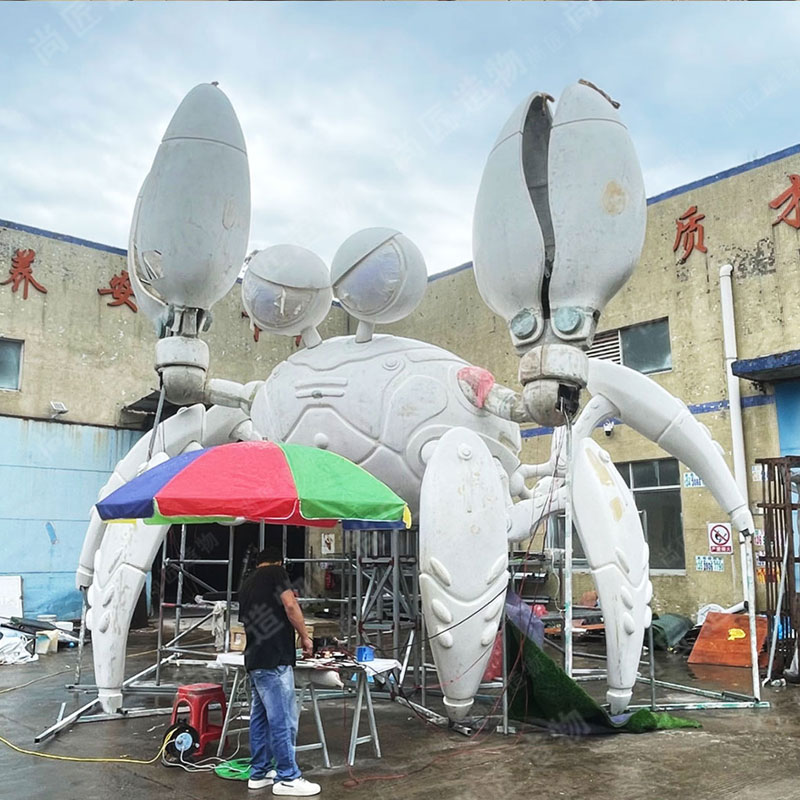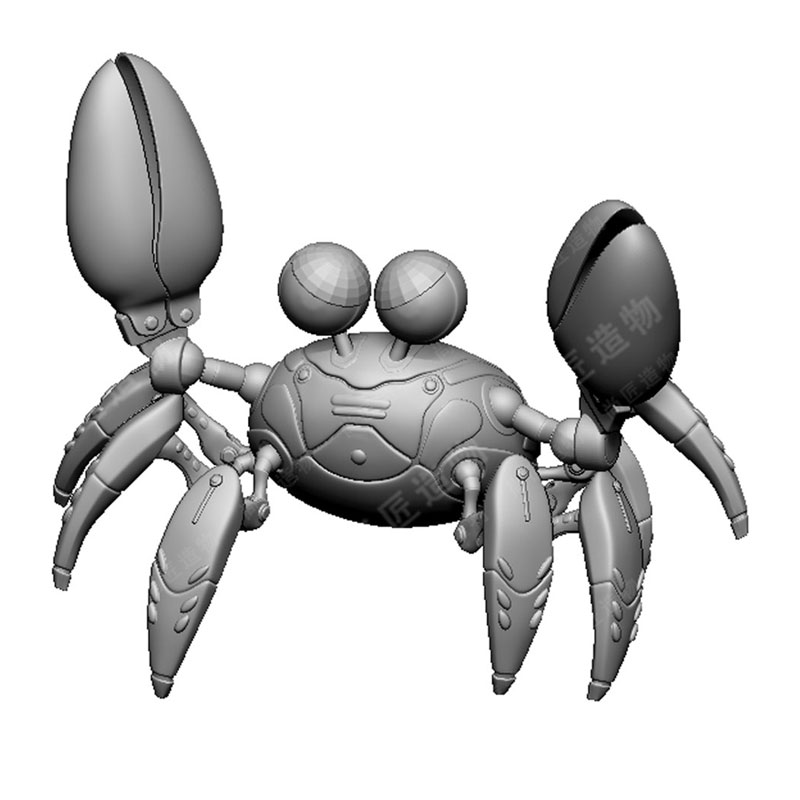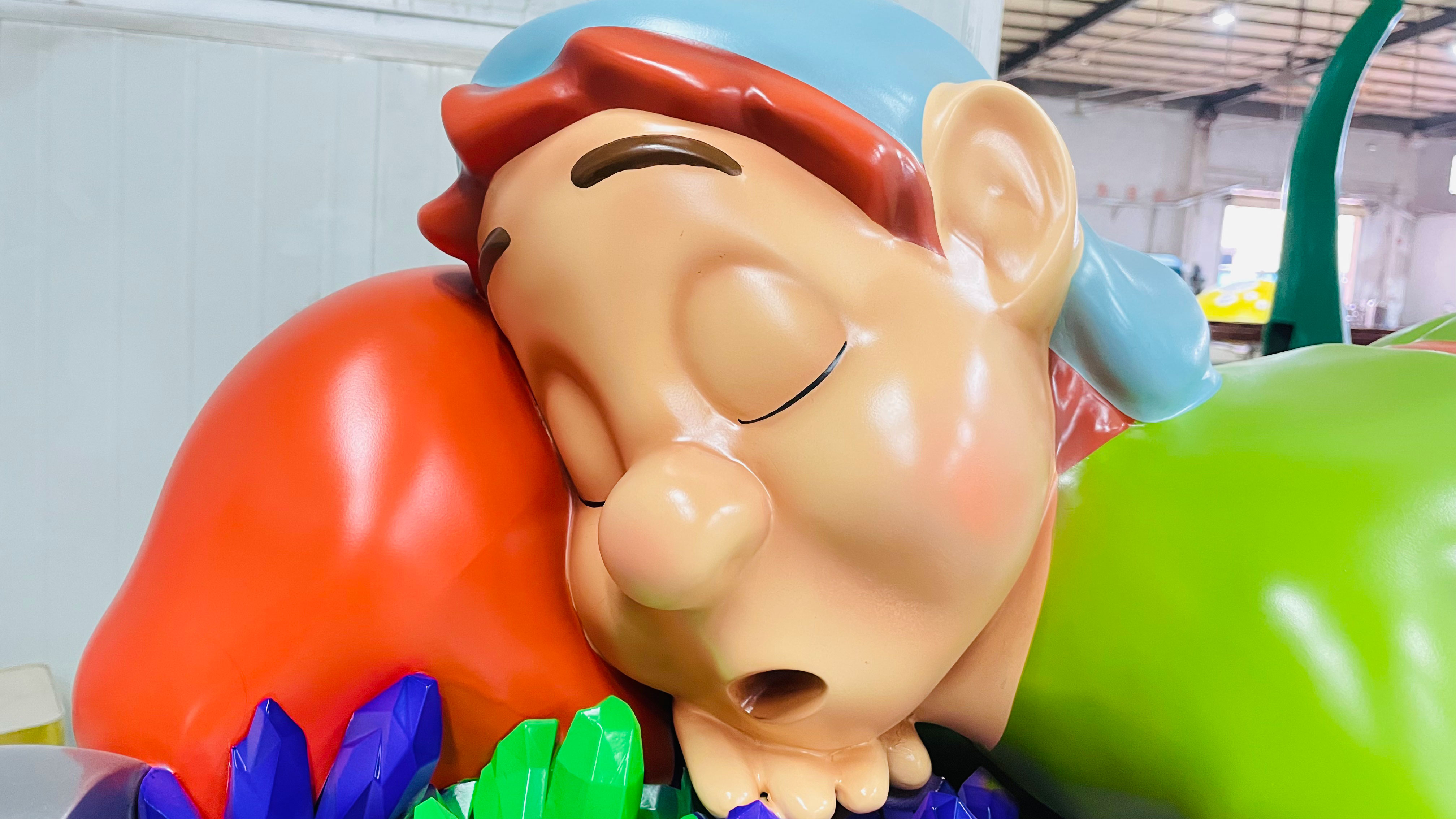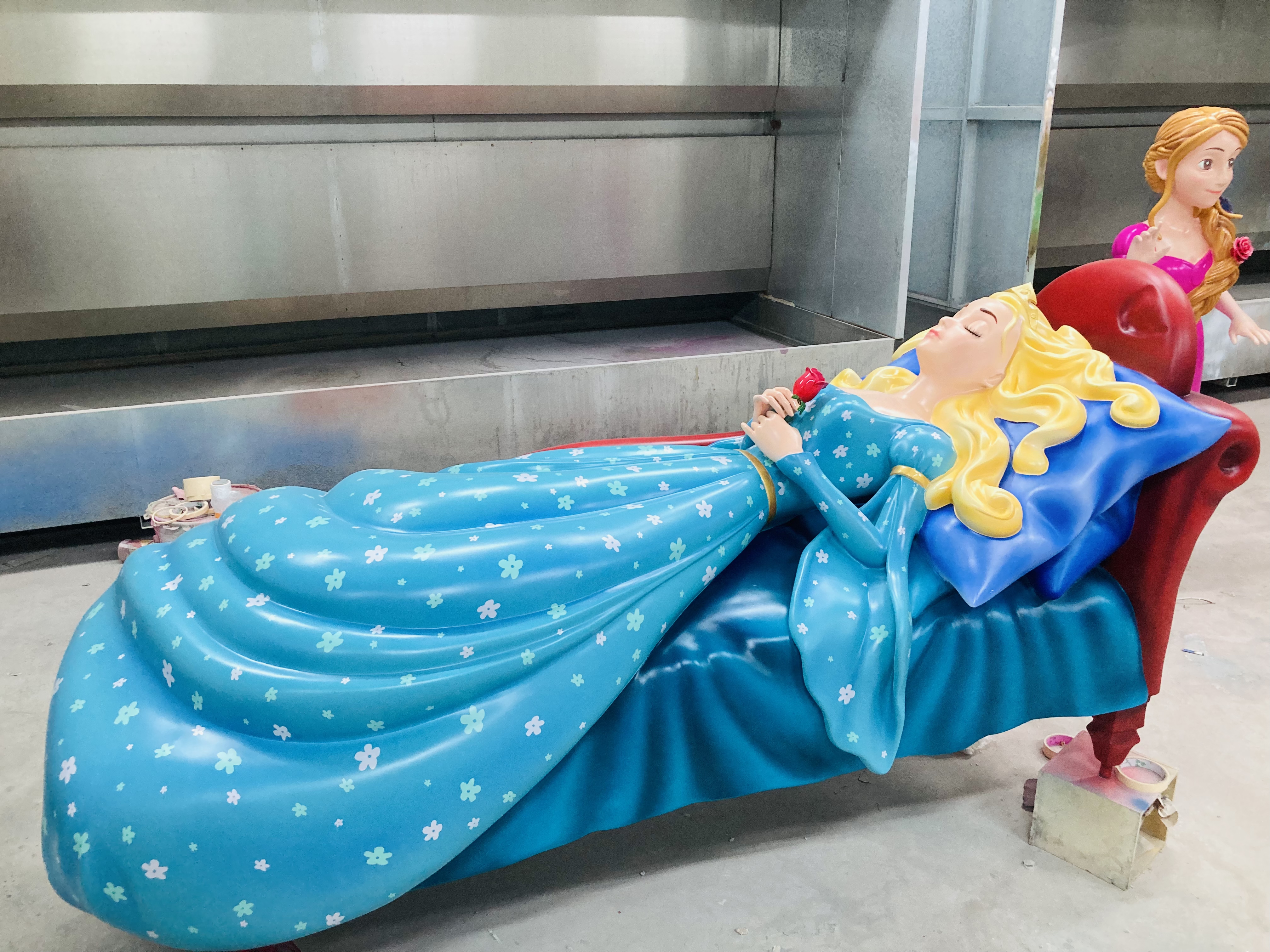Key Takeaways
Creating metal art featuring licensed characters requires balancing artistic vision with legal awareness. First, understand that copyright law protects character designs, meaning direct replication without permission risks infringement. To legally craft such sculptures, artists must either obtain formal licensing agreements or employ transformative techniques that reinterpret characters in original ways. Licensing involves negotiating terms with rights holders, which often includes royalties and usage restrictions—critical steps to avoid costly disputes.
For those avoiding licensing, Realistic sculpture projects may still qualify under fair use if they significantly alter the character’s purpose, expression, or context. Examples include abstract reinterpretations or satirical adaptations. However, legal gray areas exist, so consulting an intellectual property attorney is advisable. Additionally, documenting your creative process—from sketches to final design—can strengthen claims of originality if challenged. By prioritizing compliance and innovation, artists can safely navigate pop culture-inspired metalwork while respecting intellectual property boundaries.

Metal Art Copyright Compliance Guide
Creating metal sculptures featuring licensed characters requires careful navigation of intellectual property laws. Copyright protection automatically applies to original character designs, meaning artists cannot legally reproduce recognizable features without permission—even in three-dimensional form. To avoid infringement, always begin by identifying the rights holder (often studios or publishers) and securing formal licensing agreements.
"Treat character licensing like architectural blueprints—you wouldn’t build a house without the architect’s approval," advises IP attorney Mara Voss. "Contracts should specify distribution limits, royalty percentages, and approved modifications."
For derivative works, focus on transformative techniques that add original artistic interpretation. Altering proportions, combining elements from multiple characters, or reimagining figures in abstract styles may qualify as fair use if they provide "new meaning or message." However, courts assess transformations case by case, so consult legal counsel before commercializing borderline designs.
When working with kinetic sculpture elements—such as moving parts in mechanized artworks—ensure licensed designs remain identifiable only in authorized contexts. For example, a wind-powered Kinetic sculpture using generic shapes avoids infringement, while incorporating copyrighted logos or silhouettes risks legal action. Maintain detailed records of licensing communications and design iterations to demonstrate compliance if challenged.
Securing Character Licensing Essentials
Before creating metal sculptures featuring recognizable characters, artists must address licensing requirements to avoid legal disputes. Copyright and trademark laws protect intellectual property (IP), meaning even stylized interpretations of popular characters require permission from rights holders. Start by identifying the entity controlling the character’s IP—this could be a studio, publisher, or individual creator. For example, Marvel Comics owns Spider-Man, while Nintendo oversees Mario.
Licensing agreements typically involve negotiating terms such as royalty rates, production limits, and geographic distribution rights. Some licensors offer "artistic licenses" for small-scale projects, allowing creators to produce limited editions without mass-production rights. Always review contracts for clauses related to derivative works, as even IP character sculpture projects must adhere to approved design guidelines. For public-domain characters (e.g., Sherlock Holmes), confirm which elements remain protected—Arthur Conan Doyle’s later stories still fall under U.S. copyright until 2025.
Consulting an entertainment lawyer can clarify ambiguities, particularly when blending multiple IPs or adapting characters into abstract metal forms. Proactive licensing not only ensures compliance but often grants access to official style guides, streamlining the approval process for commercially viable artwork.

Transformative Techniques for Legal Sculptures
Creating metal sculptures of licensed characters requires balancing artistic expression with legal boundaries. Transformative techniques—modifications that significantly alter the original design—are key to avoiding copyright issues. For example, reimagining a character’s proportions, posture, or material texture can shift the work from direct replication to original interpretation. A Cartoon sculpture might blend geometric abstraction with recognizable features, retaining the essence while introducing novel elements.
Legal transformation often involves stylistic shifts, such as steampunk adaptations or minimalist redesigns, which reinterpret characters through distinct artistic lenses. Adding contextual elements—like placing a superhero in a historical setting or integrating environmental themes—can further distinguish the work. Courts typically assess whether the new creation offers “a different purpose or character” from the original, as outlined in fair use doctrines.
However, transformative efforts must still respect trademark protections. Even abstract designs using copyrighted color schemes or logos may require licensing. Documenting the creative process—sketches, material experiments, and intent statements—helps demonstrate originality if disputes arise. This approach not only safeguards against infringement but also elevates the artwork’s cultural value by merging pop culture with innovative craftsmanship.

Avoiding Copyright Infringement in Metal Art
Creating metal art featuring licensed characters requires careful attention to intellectual property laws. Unauthorized use of copyrighted designs can lead to legal disputes, fines, or forced removal of artworks. To mitigate risks, artists must first determine whether a character’s design is protected under copyright or trademark law. For example, iconic characters like superheroes or animated figures are typically owned by corporations, and their commercial use demands formal licensing agreements.
A key strategy is securing permission from rights holders. This involves negotiating terms for reproduction, distribution, and profit-sharing. Licensing fees vary based on factors like production scale and the character’s popularity. For instance, creating a limited-edition sculpture may incur lower costs than mass-produced pieces. Artists should document all agreements in writing and consult legal professionals to ensure compliance.
| Action | Risk If Ignored | Best Practice |
|---|---|---|
| Using unlicensed designs | Lawsuits, financial penalties | Obtain written licenses from IP holders |
| Copying unique features | Claims of derivative work theft | Focus on transformative interpretations |
| Selling without approval | Cease-and-desist orders | Limit sales to licensed platforms/events |
Transformative techniques, such as abstract reinterpretations or merging multiple cultural elements, can help artists avoid infringement. Courts often assess whether a work adds “new expression or meaning” to the original—a principle highlighted in Campbell v. Acuff-Rose Music, Inc. (https://en.artmovr.com/) blending a character with geometric patterns may qualify as fair use if it critiques or parodies the source material.
Proactive research into regional copyright laws is essential, as regulations differ globally. In the U.S., the Digital Millennium Copyright Act (DMCA) governs digital reproductions, while the European Union’s Copyright Directive impacts commercial adaptations. Regular audits of design elements and ongoing communication with licensors further reduce legal exposure.
Crafting Licensed Pop Culture Statues Legally
Creating metal sculptures featuring licensed characters requires strict adherence to intellectual property laws. The process begins with identifying the rights holders, which may include studios, publishers, or estates controlling the character’s commercial use. For example, producing a stainless steel sculpture of a superhero requires formal licensing agreements with the comic publisher or film studio. Artists must negotiate terms covering production scope, distribution channels, and royalty percentages, often through legal intermediaries.
A critical step involves distinguishing between direct reproductions and transformative works. While exact replicas demand full licensing, reinterpretations may qualify under fair use if they add significant artistic commentary or parody elements. However, this distinction remains legally ambiguous, making prior consultation with an IP attorney advisable. For commercial projects, partnering with licensed manufacturers or franchises minimizes risk, as they already hold distribution rights. Documentation of permissions and contract terms should be maintained throughout the sculpture’s lifecycle to prevent disputes. By prioritizing legal compliance, artists can ethically contribute to pop culture art while avoiding costly litigation.
Fair Use Guidelines for Character Artworks
Understanding fair use is critical when incorporating licensed characters into metal sculptures, though its application remains nuanced. This legal doctrine permits limited use of copyrighted material without permission for purposes like commentary, parody, or education. However, four factors determine eligibility: the purpose of use (commercial vs. nonprofit), the nature of the original work, the amount used, and the potential market impact on the copyrighted material. For example, transforming a character’s design to critique its cultural significance may qualify as fair use, while replicating iconic features for commercial sale likely infringes rights.
Artists should note that fair use is not a blanket exemption. Courts assess each case individually, and even minor overlaps with copyrighted elements can trigger disputes. To mitigate risks, focus on substantial alterations—such as abstract reinterpretations or merging multiple cultural references—that shift the work’s meaning beyond its source material. Consulting intellectual property attorneys before production is advisable, as precedents in art law vary widely. While fair use offers flexibility, relying solely on it without transformative intent or legal review remains a high-stakes gamble for metal artists.
Legal Strategies for Metal Sculpture Creation
Navigating legal requirements is critical when creating metal sculptures featuring licensed characters. Begin by securing formal licensing agreements from copyright holders, which grant explicit permission to reproduce or adapt protected designs. Many studios partner with licensing agencies specializing in pop culture franchises to streamline negotiations. For original interpretations, focus on transformative techniques—such as abstract styling or hybrid designs—that alter the character’s appearance enough to qualify as derivative works under copyright law. While this approach reduces infringement risks, consult intellectual property attorneys to assess whether the modifications meet legal thresholds for originality.
Additionally, document all permissions and design iterations to demonstrate compliance if disputes arise. Some artists use public domain characters or create generic silhouettes inspired by popular figures, avoiding direct replication. Always credit original creators in promotional materials, even when using licensed content, to maintain ethical transparency. By combining proactive licensing, creative adaptation, and thorough record-keeping, metal sculptors can minimize legal exposure while producing culturally resonant artwork.

Compliance in Modern Character Statue Design
Designing metal sculptures of licensed characters demands a nuanced approach to legal frameworks. The first step involves verifying copyright ownership, as most iconic characters belong to studios, publishers, or intellectual property holders. Artists must secure written licensing agreements specifying permitted uses, production scales, and revenue-sharing terms. For example, creating a sculpture of a Marvel superhero typically requires direct collaboration with Disney’s licensing division or authorized partners.
Additionally, compliance extends beyond mere permission. Sculptors should avoid replicating trademarked poses, logos, or color schemes that directly mirror source material unless explicitly approved. This distinction separates derivative works (requiring licenses) from transformative art (potentially eligible for fair use). However, even transformative interpretations face scrutiny if they risk consumer confusion about affiliation with the original brand.
Commercial projects face stricter rules than personal creations, as sales imply financial gain from another entity’s intellectual property. Proactive measures include maintaining records of licensing communications and consulting entertainment law specialists to navigate jurisdictional variations. By aligning artistic vision with legal boundaries, creators mitigate risks while contributing to pop culture’s evolving metal art landscape.

Conclusion
Creating modern metal art sculptures featuring licensed characters demands careful navigation of legal frameworks while maintaining artistic integrity. By prioritizing copyright compliance, artists can avoid costly disputes while paying homage to iconic pop-culture figures. The process hinges on three pillars: understanding intellectual property laws, securing proper licensing agreements, and applying transformative techniques that meet fair use standards where applicable.
As demonstrated throughout this guide, collaboration with rights holders often yields mutually beneficial outcomes, allowing creators to legally reinterpret beloved characters in metalwork. Diligent research into regional copyright variations and consultation with entertainment law specialists remain non-negotiable steps in this process. When executed correctly, these metal sculptures become more than artworks—they serve as testaments to responsible creativity that respects original creators’ rights while pushing artistic boundaries.
Ultimately, the path to legally crafting licensed character statues requires balancing innovation with legal awareness. By treating intellectual property as both a constraint and inspiration source, metal artists can develop distinctive works that honor cultural icons without compromising ethical or legal standards. This approach not only safeguards against infringement claims but also establishes credibility within the growing market for licensed pop-culture artwork.

FAQs
What defines a legal licensed character sculpture?
A legal sculpture requires formal permission from the copyright holder. This typically involves securing a licensing agreement that outlines usage rights, production limits, and royalty terms.
How do I obtain licensing for popular characters?
Start by identifying the rights holder (often studios or publishers). Submit a formal request detailing your project scope, intended use, and distribution plans. Licensing fees vary based on the character’s popularity and commercial scale.
Can I avoid infringement without a license?
Only if your work qualifies as "transformative" under fair use. This means significantly altering the original design—through abstraction, recontextualization, or stylistic innovation—to create new artistic meaning.
What risks exist for unlicensed character art?
Copyright holders can issue takedown notices, sue for damages, or demand profit seizures. Penalties escalate for commercial-scale operations or repeated violations.
Are fan-made sculptures always illegal?
Not always, but selling them usually requires licensing. Non-commercial, personal projects may avoid litigation if they don’t harm the brand’s market value.
How do I prove my sculpture is transformative?
Document design iterations showing original elements like altered proportions, mixed media, or thematic reinterpretations. Legal advice is recommended to assess compliance.
Do licenses cover international sales?
Most agreements restrict sales to specific regions. Global distribution requires negotiating expanded terms, often with higher fees and stricter reporting obligations.
 ch
ch English
English






